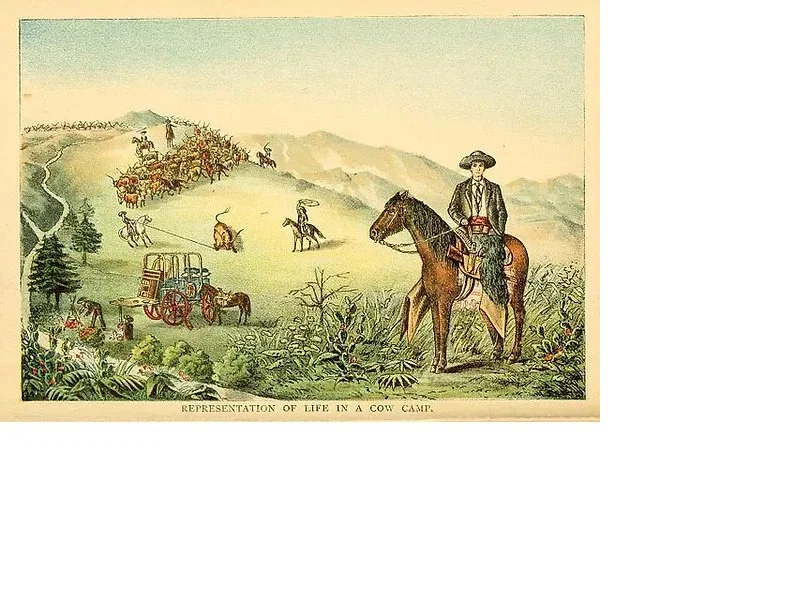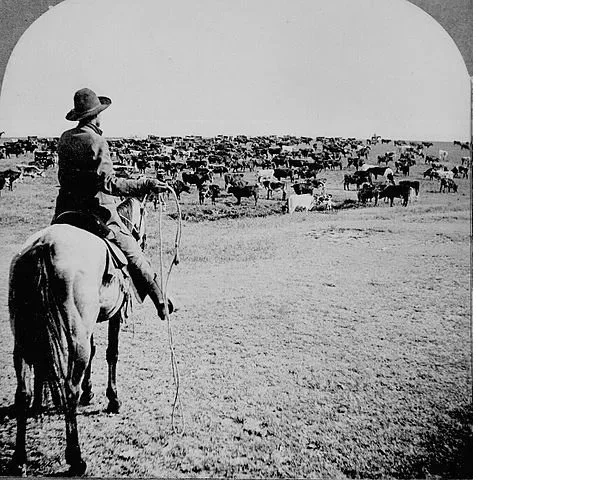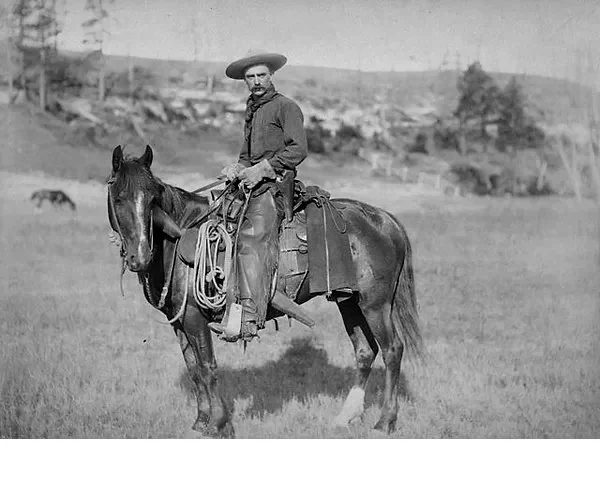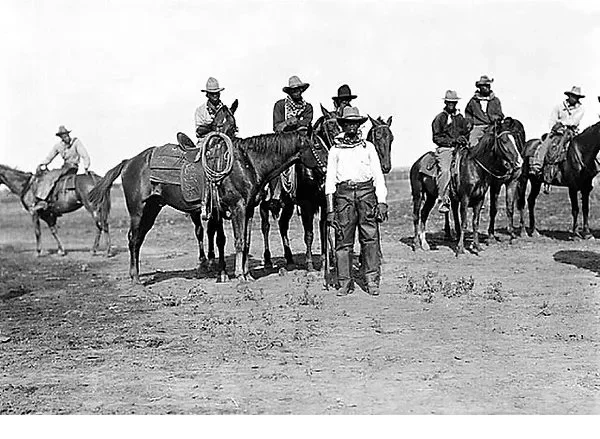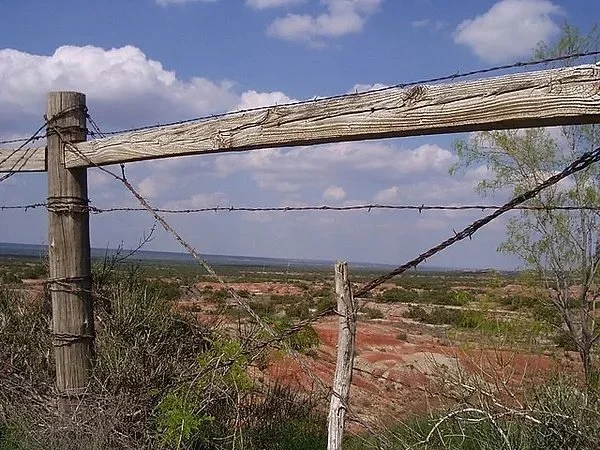Texas Cowboys and How They Shaped History
The stereotypical Texas cowboys wear spurs, boots, and cowboy hats, but how did this image become so intrinsically connected to the state? Other states had cowboys, but the iconic image of this Wild West hero and villain began in Texas. Though they seem timeless, Texas cowboys only reigned in the west for 20 years, from 1866 through 1886.
Origins of Texas Cowboys
Photo: "Texas Cowboy 1886 (Cow Camp)" by unknown in the public domain
Prior to the major cattle drives, many ranches in Mexico and its territories had vaqueros. These men were not obliged to work for a particular landowner. Rather they, served as independent contractors who owned their own equipment and contracted out their labor as they pleased. Until the cattle drives, most cowboys stayed close to the ranches where they worked, but this would change over the years. Though ranching boomed and busted over the years, after the American Civil War, cattle ranching came back into popularity, increasing the need for vaqueros (cowboys) once more.
The Emergence of Cowboy Culture
Photo: "Cowboy 1902" by unknown in the public domain
After the Civil War, Texas still enjoyed wide, open ranges and thousands of cattle waiting to be driven north to the meat markets. Though ranch owners typically had cattle on hand just for subsistence needs or to sell meat to locals, after the Civil War, things changed. Philip Danforth Armour changed how Americans would eat meat by creating a meatpacking facility in Chicago. Rather than eating meat from their own ranches or local producers, citizens would eat cattle raised in Texas, driven to Missouri and other northern states where they were butchered, and shipped around the country via rail. This would be the lynchpin in creating Texas cowboys and their culture.
Cowboys emerged as cattle drivers, taking the cattle from the ranges in Texas north. Though the cattle could move at a maximum of 25 miles daily, this would affect the quality of the product since it would be like forcing the cattle to run, causing them to lose weight. The best cattle were plump and ready for slaughter when they arrived at their destination. To ensure this, cattle drives typically could not move more than 15 miles each day. Needless to say, it took weeks to get cattle from Texas to states in the north, but by doing so, the price for the cattle would increase 10-fold, making it well worth the cowboys' time and effort.
Cowboy Clothes
Photo: "The Cow Boy 1888" by John C.H. Grabil in the public domain
Cattle drives meant cowboys did not have a home to go to at night for months. This meant that everything they needed had to be portable. The cowboy hat was versatile enough to protect from the sun, while providing a bowl for scooping water from a river. Tough-wearing pants and long-sleeved shirts protected cowboys from the sun, wind, cold, and heat. Many cowboys sported vests to take advantage of the numerous pockets in them, which could be used to hold personal effects such as tobacco or mementos. The bandana had a multitude of uses. A cowboy could wrap it around his nose and mouth to protect himself from blowing sand and dust. And an overheated cowboy could dip a bandana in water and place it on the back of his neck to cool off.
Diversity on the Range
Photo: "Black Cowboys" from the Texas State Historical Association in the public domain
While the rest of the country continued to live with considerable racial strife, the world of the cowboy was surprisingly diverse. Estimates hold that about 25% were black and 15 to 30% were of Mexican descent. Later, Native Americans joined the ranks of the cowboy, though in smaller numbers.
How the West Was Lost
Photo: "Barbed Wire Fence" by Pschemp licensed under CC BY 3.0
The days of the long cattle drives, and the peak of Texas cowboys, ended in 1886 with the invention of barbed wire. Tired of having cattle driven over their property, landowners began partitioning off their land, reducing the space available to move cattle and for them to graze. Additionally, meat packing facilities were constructed much closer to the ranges where the cattle were raised. This made cattle drives obsolete, reducing the role of the cowboy to one of an icon in history.
Though the era of Texas cowboys only lasted for two decades, the legend of this individual continues to echo today. Even one of Texas's beloved NFL teams is named for them. Cowboys helped to shape the West, and their contributions should not be forgotten.
